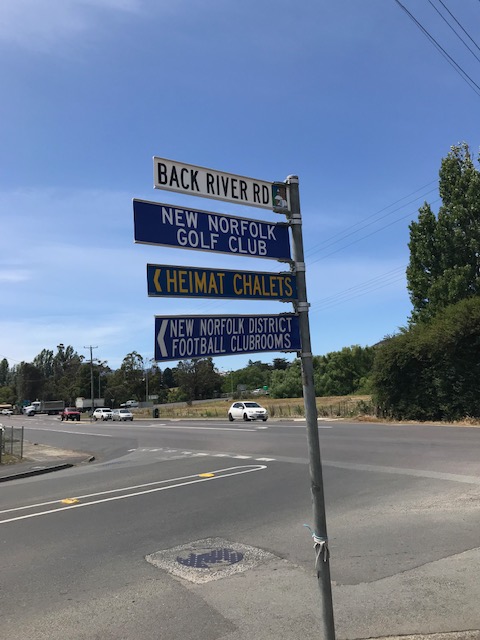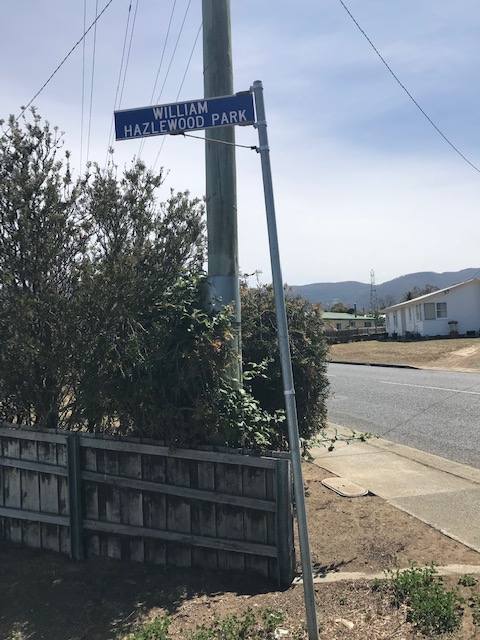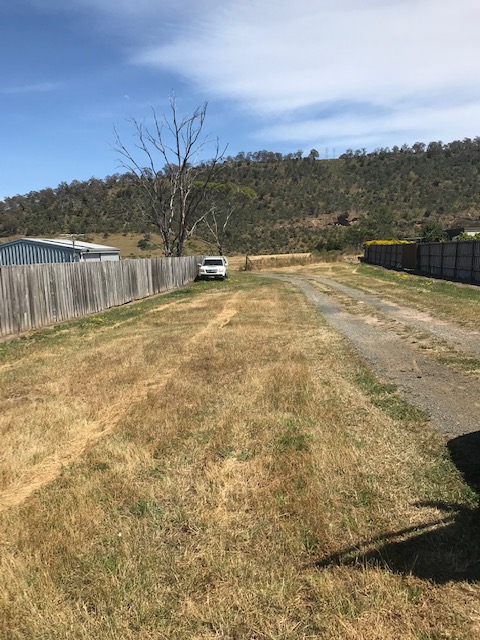William was born in 1748 and baptised on the 17th June 1748 in Mollington, Oxfordshire. His parents being, Thomas Hazlewood and Hannah Hayward. He was the youngest child and had four known siblings, Elizabeth Hazlewood 1743, Mary Hazlewood 1744, and Anna Maria Hazlewood 1747. He also had an older brother also confusingly named William who was born in 1745 and baptised on the 17th November 1745 but who died as an infant of one year and was buried in Mollington on the 13th April 1746. (This has proven very confusing for researchers trying to find the right William).
If ever there was a person who was born it seems to bump from one blighted tragedy to the next, I reckon William must have been a decent contender. The child who was named for a dead brother was barely a year old when his own father met his demise at the tragically young age of 35 in the October of 1749. His mother Hannah was left with four children to raise the eldest being only six years of age.
The village of Mollington was and remains a small hamlet in landlocked Oxfordshire where the primary occupation was agriculture. It can be safely assumed that William’s father Thomas was a Labourer employed in this area. How Hannah got on after the death of her husband one can only wonder and figure that she would have been reliant on the support of her family in the village.
William Hazlewood (felony)
On the 15th March 1790, forty-two-year-old William fronted the Maidstone, Kent Assizes and was convicted of stealing a bay mare. He was sentenced to seven years’ transportation to the very distant, remote, and barely colonised Australia. In fact, so remote and far away that William managed to get himself written into history by his inclusion on the third fleet of convicts to the colonies. It was only a mere handful of years since Captain Cook himself had sailed into Botany Bay. I’m sure that at the time William probably didn’t see the historical value of his impending journey.
On the 27th March 1791 after a year in Gaol waiting, William was transported from Plymouth in Devon by the ship “The William and Ann” to Port Jackson. One of seven ships in the third fleet. On the 28th August 1791, the ship sailed into Port Jackson in Sydney Cove and William disembarked into the late and temperate winter season with spring just on the cusp. He wasn’t to linger long and by September he once again was aboard a ship, in this case it was the Salamander and he was enroute to his new home on the new settlement of the isolated Norfolk Island to the north.
arrived at Norfolk Island, September 1791, received rations till 31 December 1795
William resided on Norfolk Island for seventeen years, from 1791 through to 1808. He was granted five acres of land in 1802. He would not settle permanently however as the island was cleared of European settlement by the authorities in 1808. In 1791 the push was to settle the island and before he’d even had time to see a decent summer on the 5th November of the same year he was married off to his new bride and fellow convict 37 year old Elizabeth Hopper. Elizabeth had already been on Norfolk Island for a year before William arrived. The fact that Elizabeth and William had left their first families behind in Britain was conveniently discarded and their nuptial presided over by the Rev. Johnson on Norfolk Island. Elizabeth herself had also not long arrived in the colonies so whether William was the love of her life is dubious at best.
Elizabeth Hopper (felony). Aged 33. Trial date 12 December 1787.
(From Old Bailey Online) http://www.oldbaileyonline.org/browse.jsp?id=t17871212-82-defend751&div=t17871212-82#highlight
(Transcript 87.) ELIZABETH HOPPER was indicted for stealing, on the 5th of October , one piece of muslin, containing, in length, two yards and a quarter, value 4 s. the property of Anthony Twydell . ROBERT WILBERFORCE sworn. I am apprentice to Mr. Twydell; on the 5th of October last, the prisoner and two other women came into my master’s shop together, and looked at different prints, they liked none; they then looked at remnants, and bid 20 d. for what cost 2 s. 8 d. They then talked concerning how much would make the child, which the prisoner had in her arms, a frock; I took one piece, consisting of a yard and quarter of muslin, and folded it out of the rest; I was on the other side, and said, I thought they were thieves, the prisoner then went out, and the other two followed: when they went out our man followed them, and took from the other two women, two pieces of muslin: I did not see him take them; he is not here; and he brought them all back into the shop; and when the prisoner came back, I saw her drop that piece mentioned in the indictment, containing two yards and a quarter of muslin dimity; it was measured and marked at the time, and the constable has had it ever since; his name is Williams; she had a long red cloak on, and it fell before her from under her cloak, the other women were in the shop at the time, and one of them took the child from her; I am positive that it was she that dropped it; they had not purchased any thing; I sent for a constable, and said they should all go to the Compter; she said she was sorry to part with her child; on the 6th they were examined before the Lord Mayor, and the prisoner escaped, and the others were discharged, because she could not be taken again; she was taken again on the 14th; I am positive she is the woman. (The property proved.) THOMAS WILLIAMS sworn. I took the prisoner in Mr. Twydell’s shop; this piece of muslin was given me with her, I have kept it ever since. PRISONER’s DEFENCE. The woman in the shop in the black cloak dropped the muslin from under her cloak. GUILTY . Transported for seven years . Tried by the London Jury before Mr. ROSE
Transportation
Elizabeth was 35 when she left England from Plymouth on the 29th July, 1789 aboard the Lady Juliana. As part of the Second Fleet to the colonies the ship she was aboard would become in its own time and for the future the rather famous ship given the insalubrious moniker of ‘the floating brothel’. The Lady Juliana was the first of the Second Fleet ships to arrive in Port Jackson on the 6th June 1790. She departed England in 1789 with a cargo of 226 female convicts. She took a remarkable 309 days to reach Port Jackson. One of the slowest journeys made by a convict ship. She called in at Tenerife and St Jago enroute and spent forty-five days at Rio de Janeiro and nineteen days at the Cape of Good Hope. Unlike the other ships in the second fleet the women on the Lady Juliana were treated very well and given fresh rations when available. This was largely since there was an attitude of each man aboard being able to take a ‘willing wife’ from among the women for the duration of the journey.
Prisoners were free to move around openly and it was remarked that the sailors made no attempt to suppress their licentious activity with the convicts. The Doctor on board kept the women in good health with only five dying throughout the journey. There were also a considerable number of babes born on this journey. Upon their arrival in Port Jackson the nearly starving colonists greeted this first shipload of what they remarked to be ‘useless women’ from the second fleet with open disdain. It had been over two years since they had had supplies or news from England and it was food and seed and supplies that they had looked for not a cargo load of more to be fed and clothed. This was quickly rectified a few days later when the Justinian sailed into Port Jackson with the much-needed supplies. Within a week or so the remainder of the Second Fleet sailed into Port Jackson. The drought which had affected the growth of their first crops broke and soon the colony was growing enough food to feed themselves. Before long the Hawkesbury land was opened and it became the food bowl for the colony. The ships steward John Nicol as an older man recalled a fascinating account of the voyage which makes for a detailed description of the journey.
Furthermore, I recommend you read Sian Rees book, The Floating Brothel. It is a truly descriptive and engaging read. a documentary from Timewatch, “The Floating Brothel“ which documents the story of the women aboard the Lady Juliana and gives insight into the life that its inhabitants were living on her journey to the colonies. Most of the female cargo of the Lady Julian were convicted as petty thieves and prostitutes. Whatever society may have thought of them, they were certainly resilient and went on to be the early pioneering women who were the mothers to our nation in its early days. There is a physical memorial to the women of the Lady Juliana in the gardens of Wallabadah in New South Wales. This originally was opened with a rather impressive set of gardens and memorials to the first fleeter but this was extended in 2009 to the second fleeter as well. A stone memorial has the names engraved of the women aboard ‘the floating brothel.’
Married Life
William and Elizabeth had it would appear a few years of married life together when on the 15th November 1795, almost four years to the day of their marriage, little Maria Hopper- Hazlewood was born. Tragically it would appear Elizabeth died on either the day of birth or not long after with William cast with the role of sole provider for the tiny infant. Throughout the time that William and Elizabeth were living on Norfolk Island he was frequently ‘on the stores’ or receiving victuals from the colony store. It’s quite a poignant moment reading through the original victual records and seeing her record come to an abrupt stop. No comment, just a reduced number and then empty spaces, she had died. Victualling was common on Norfolk Island among its occupants. William would be granted five acres of land on Norfolk Island on the 1st November 1803.
Norfolk Island to Van Diemen’s Land.
During 1807 a decision was made by the authorities that the settlement on Norfolk Island should be abandoned and all convicts, settlers and military personnel were instructed to begin decampment. Some would go onward to Port Jackson at Sydney. A large contingent would be re-settled on what was then Van Diemen’s Land (Tasmania). The first white settlement of these people would later become Hobart. Not surprisingly there was some resistance to leaving Norfolk Island for those who had managed to build themselves a life with which they were comfortable. Probably not surprising our William Hazlewood was among this group. There were six embarkations of the main groups and our William and little Maria had to be rounded up (as many dissenters had disappeared into the surrounding bush hoping to avoid detection). They were on the fifth ship out, The City of Edinburgh on the 3rd September 1808. Apparently, the trip that took around a month to get to the southern isle was through poor conditions and wretched weather. The complaints of those aboard were loud and frequent. They arrived on an isle where supplies were not in good order and a rapid influx of persons had taken the tiny population in the greatest apace of time to over 1000. Those disembarking the City of Edinburgh were remarked to be in a desperate state and some of them near naked in remnants of apparel.
When William and his daughter Maria were resettled in New Norfolk in Tasmania in 1808 they continued to be supplied by the stores for some years. Life was very tough on the tiny island and very little was in place to receive them.
Eventually William established a small holding for himself where he farmed on the Back River are of the Derwent and this would one day make up Maria’s inheritance. It would also be where William and Elizabeth’s daughter Maria would meet her husband fellow convict Robert Hay. To date I’ve not been able to find any reference to William remarrying or having any more children. At his death, his only family were listed as his daughter Maria and her husband Robert Hay.
(2019) land that formed part of William Hazlewood’s property at Back Hills (now Magra, Tasmania)









Researching as to whether or not William Hazlewood convict is actually the William Hazlewood of Mollington, Oxfordshire that seems to be the common thread in ancestry trees – there is a William who died in 1794, had a number of children and a wife Ann Archer and is tied to the 1748 baptism but no hard evidence it is the same one (found a website that stated, in 1730 there were only 42 houses in Mollington so can’t be too many Williams in this village). My question whether or not it can be answered is where did William commit his crime? Tried at Maidstone Kent but does not necessarily mean he was from that area. Is there anywhere to find out where he was when he stole the horse from John Winder (there was a John Winder born 1740 in Berkshire nearby). This could open up a new search line.
Researching as to whether or not William Hazlewood convict is actually the William Hazlewood of Mollington, Oxfordshire that seems to be the common thread in ancestry trees – there is a William who died in 1794, had a number of children and a wife Ann Archer and is tied to the 1748 baptism but no hard evidence it is the same one (found a website that stated, in 1730 there were only 42 houses in Mollington so can’t be too many Williams in this village). My question whether or not it can be answered is where did William commit his crime? Tried at Maidstone Kent but does not necessarily mean he was from that area. Is there anywhere to find out where he was when he stole the horse from John Winder (there was a John Winder born 1740 in Berkshire nearby). This could open up a new search line. (sorry if this posted twice – I had issues the first time!)